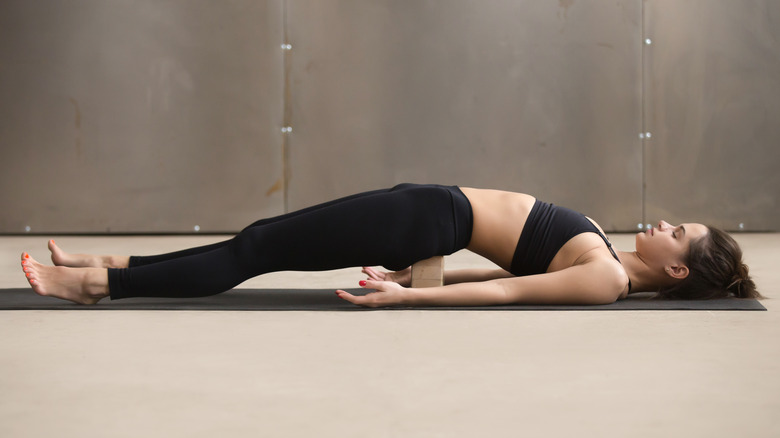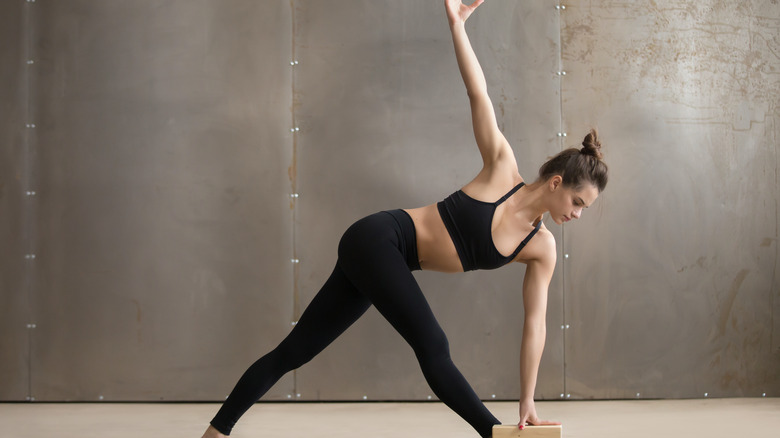The Right Way To Use Yoga Blocks
One of the beautiful things about yoga is that it doesn't require much for you to get going. If you have a yoga mat and comfy clothes, you're pretty much set to begin your practice. That said, it does help to have certain props handy to help you get the most out of your poses and to provide you with the additional support and stability you may need (via Yoga Renew).
If there's one prop you're going to potentially use a lot, it's the yoga block. While the block itself is simple, you need to make sure to use your yoga block — or blocks — correctly and effectively. How you apply the yoga block to your practice will depend on the poses you choose, and your body's needs.
One pose where a yoga block is integral is supported bridge, a relaxing posture for your lower back that may even help lower back pain issues. Just be sure to place the block under the sacrum to get the full benefit. If you have a lower back injury and experience pain during the pose, best to hold off on it until you speak to your health provider or the symptoms subside (via Verywell Health).
What other poses use yoga blocks?
You may find that you will need two blocks for certain poses, so you should consider having two yoga blocks available to give you more options.
For example, whether you're a beginner or more experienced, you may want to use two yoga blocks during downward facing dog, a pose that can demand a good amount of upper body strength. Placing one block under each palm will shift your weight back and take the pressure off your wrists. Alternatively, if you want to deepen the pose, you can instead put one block under each foot (via Yogi Approved).
You can also use a yoga block to support your triangle pose. Triangle pose helps with your alignment, and a yoga block for this pose is useful if you find that your hand doesn't reach the floor due to muscle tightness in your legs. Placing the block close to your heel and letting your hand rest on the block will give you the stability you need so you can enjoy the pose rather than straining. And remember to adjust the height of the block as needed (via Yoga Rove).
Whatever poses you choose to use blocks for, never feel ashamed about incorporating blocks into your practice. Yoga is not a competition, but rather a method to become more aware of the mind-body connection and improve your well-being. And using yoga blocks as part of your practice could very well be the building blocks to help get you there.


